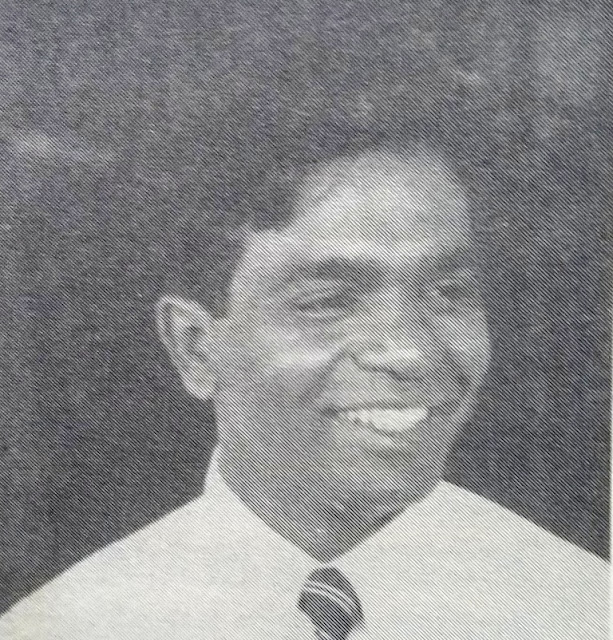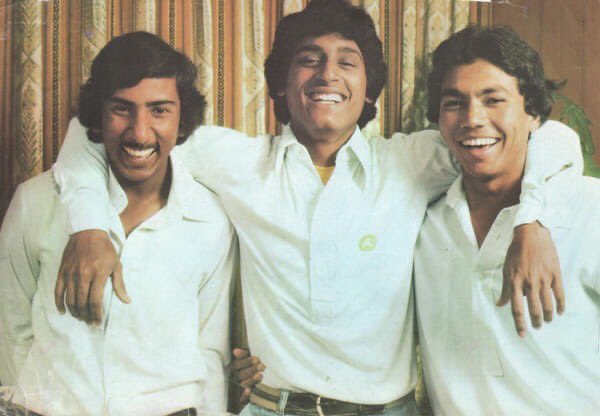Wednesday, March 18, 2020
Saturday, February 29, 2020
Tuesday, February 18, 2020
Monday, February 17, 2020
Wednesday, January 22, 2020
Thursday, January 16, 2020
Fred Trueman England 1952–1965
Fred Trueman was not only a great fast bowler, he was also a great entertainer. There is a theatrical element to bowling fast and Fred played it for all it was worth. He’d happily go into the opposition dressing room before play – in a county match if not a Test match. And he announces to the assembled audience which batsmen he’d be getting out later in the day, and how.
You can only really play that game if you have the talent to back it up often, and he did. The fact that he played in an era when television, for the first time, was making stars out of top sportsmen may have helped in the nurturing of the image. But if he was the first to talk himself up, soon enough plenty of others were following suit.
The downside to this was that the black-and-white footage of Trueman in action survived for later generations to scrutinize. Moreover, plenty concluded that he was not quite as fast as the legend. Burnished of course by Fred himself – would have them believe. Make no mistake, though, Fred Trueman was fast in his early days and as time went on. He developed into a highly skillful operator who did not need pace alone to pick up wickets.
In his mature years, he was a highly intelligent operator. He had a lovely action, perfectly honed to the job in hand. You do not become the first bowler in the history of the game to take 300 Test wickets, which Trueman did in 1964, without being very good. His average of 21.57 and strike rate of 49.43 are both exceptional.
The way Trueman burst on to the scene at the age of 21 may have had something to do with how his story unfolded. England had craved a fast bowler of genuine hostility since the days of Harold Larwood. And when in his first match India lost their first four second-innings wickets for no runs, three of them to Trueman.
There was understandable excitement, not least from the bowler himself who sent the Indian batsmen on their way with a few choice words. That, after all, was how a fast bowler was supposed to behave – according to some! Later in the series, Trueman destroyed the Indians in even more comprehensive fashion.
Trueman taking 8 for 31 in a mere 8.4 overs spell. ‘Where would you like the sightscreen, batsman?’ The aura was established but it took Trueman time to adjust to the reputation he had won. On his first England tour to the Caribbean in 1953–54 his immaturity got the better of him as he showed little concern at the way he injured some of the West Indies batsmen.
One of whom was the greatly respected George Headley. He lost his good conduct bonus and played only three Tests in the next three years. The penny dropped in the end and from the time that he got his England place back for an extended run in 1957 he embarked on a golden period in his career.
And the one predicted for him when he first emerged from the South Yorkshire mining community to excite the coaches at Headingly. He took 22 wickets at just over 20 apiece in that summer’s series with West Indies. Which England won 3–0, and he took 15 more at 17.06 against New Zealand the following year.
The realization dawned that a new-ball pairing of Trueman and Brian Statham could be a winning combination. Between May 1957 and May 1963, Trueman took 197 Test wickets and Statham 132. Trueman at the much superior average and strike rate.
Although he had some natural gifts such as strength and speed, by Trueman’s own admission it took him several years to fully master his craft. He learned to pitch the ball up to allow it to swing late. He commanded a big out-swinger but also a deadly off-cutter, as well as a very good Yorker.
Although he became a very canny analyst of conditions as well as the strengths and weaknesses of opponents, there was still the occasional disaster where he lost the plot. When as happened at Headingly in 1964 he tried and spectacularly failed to bounce out Australia’s Peter Burge. It cost England the game.
But against the same opponents on the same ground three years earlier he had bowled brilliantly in victory. For four years from 1959, Trueman was outstanding, taking 20 or more wickets in seven out of eight successive series. Although his overall record in England was exceptional, he was also very good on tours of the West Indies and Australia.
England won in the The Caribbean in 1959–60, which was a terrific achievement given that the West Indies batting included the likes of Garry Sobers and Frank Worrell and came away with a draw – if not the Ashes – in Australia in 1962–63. The one a game that England won in each series owed much to Trueman, who took five for 35 in the first innings in Trinidad and eight wickets in the game at Melbourne.
If Truman’s home and away records are lopsided it is partly because he was selected for so few overseas tours in his early days. That said, his figures in England accurately reflected how dangerous he was when the ball moved around: he took 229 wickets at home at a shade over 20 each and a strike rate of 44.9.
Jim Laker and Tony Lock took their Test wickets in England more cheaply but none of England’s leading bowlers can improve on Trueman’s strike rate in home matches. Not until James Anderson overtook him in 2014 did anyone beat his haul of wickets in England.
After retirement, Fred Trueman almost became a caricature of himself, whether as a radio summarizer or as a regular voice on the after-dinner circuit. He was disappointed at some of the things that might have been – he would have liked the Yorkshire captaincy, but it never came his way – and decried what he saw as declining standards.
In truth, he was never quite the character of popular myth. He was not a big drinker, nor really a fire-breathing monster. But it had served to think he was. As John Warr, another England bowler once said of Trueman, ‘Cricket and the Anglo-Saxon the tongue has been enriched by his presence.’
Labels:
England
Subscribe to:
Posts (Atom)











